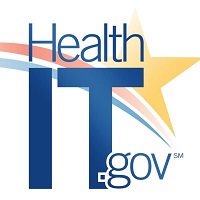 The U.S. Department of Health and Human Services (HHS) issued a draft strategy designed to help reduce administrative and regulatory burden on clinicians caused by the use of health information technology (health IT) such as electronic health records (EHRs).
The U.S. Department of Health and Human Services (HHS) issued a draft strategy designed to help reduce administrative and regulatory burden on clinicians caused by the use of health information technology (health IT) such as electronic health records (EHRs).
The draft Strategy on Reducing Regulatory and Administrative Burden Relating to the Use of Health IT and EHRs was led by the HHS Office of the National Coordinator for Health Information Technology (ONC), in partnership with the Centers for Medicare & Medicaid Services (CMS), and was required in the 21st Century Cures Act. The draft strategy reflects the input and feedback received by ONC and CMS from stakeholders, including clinicians, expressing concerns that EHR burden negatively affects the end user and ultimately the care delivery experience. This draft strategy includes recommendations that will allow physicians and other clinicians to provide effective care to their patients with a renewed sense of satisfaction for them and their patients.
“Usable, interoperable health IT was one of the first elements of the vision I laid out earlier this year for transforming our health system into one that pays for value,” said HHS Secretary Alex Azar. “With the significant growth in EHRs comes frustration caused, in many cases, by regulatory and administrative requirements stacked on top of one another. Addressing the challenge of health IT burden and making EHRs useful for patients and providers, as the solutions in this draft report aim to do, will help pave the way for value-based transformation.”
Stakeholders have indicated to ONC and CMS that when they use their EHRs, clinicians have to rely on checkboxes, templates, cut-and-paste functions, and other workarounds that hinder the intended benefits of EHRs. Clinicians have reported they are spending more time entering data into the EHR, leaving less time to interact with their patients. Required documentation guidelines have led to “note bloat,” making it harder to find relevant patient information and effectively coordinate a patient’s care.
“Information technology has automated processes in every industry except health care, where the introduction of EHRs resulted in additional burden on clinicians,” said Don Rucker, national coordinator for health information technology. “Health IT tools need to be intuitive and functional so that clinicians can focus on their patients and not documentation. This draft strategy identifies ways the government and private sector can alleviate burden. I look forward to input from the public to improve this strategy.”
“Over the past year, we hosted listening sessions, received written feedback, and heard from a wide range of clinical stakeholders about the current health IT systems and the requirements specifying documentation, reimbursement, and quality reporting that are burdensome and should be re-examined,” said Seema Verma, CMS administrator. “CMS has demonstrated through bold regulatory action the importance of reducing clinician burden.”
Based on the input received by ONC and CMS, the draft strategy outlines three overarching goals designed to reduce clinician burden:
- Reduce the effort and time required to record health information in EHRs for clinicians;
- Reduce the effort and time required to meet regulatory reporting requirements for clinicians, hospitals, and health care organizations; and
- Improve the functionality and intuitiveness (ease of use) of EHRs.
The public comment period on the draft Strategy on Reducing Regulatory and Administrative Burden Relating to the Use of Health IT and EHRs ends on Monday January 28, 2019 at 11:59:59 PM ET.
“All of us share the responsibility to improve how we treat the nation’s patients, and we now have the opportunity to work together to find solutions to reduce burden associated with the use of EHRs so clinicians can spend more time with their patients,” said Rucker.
